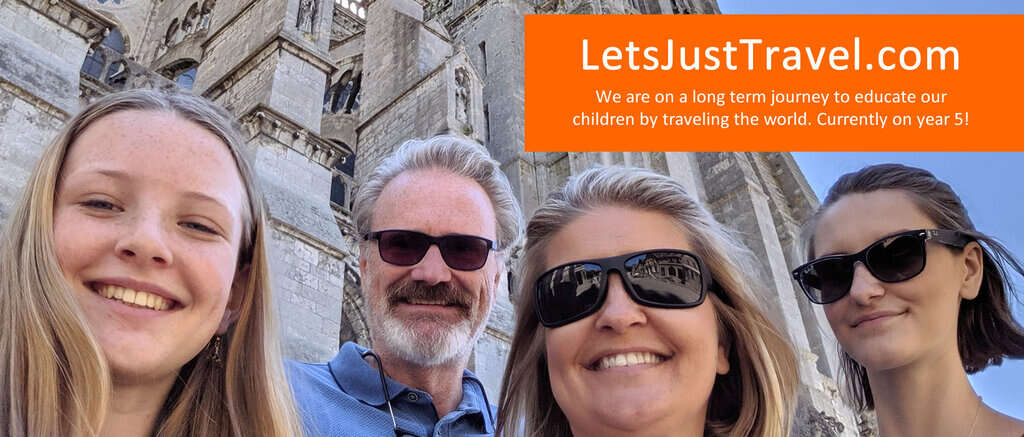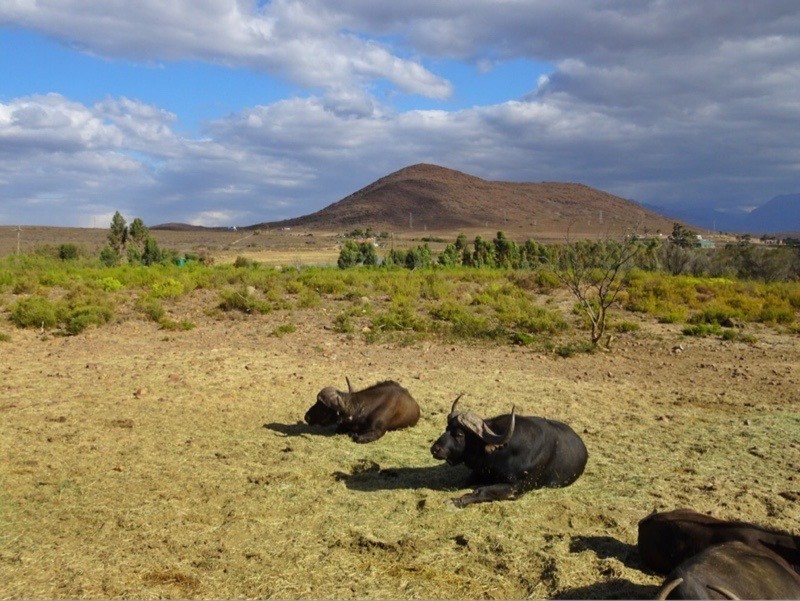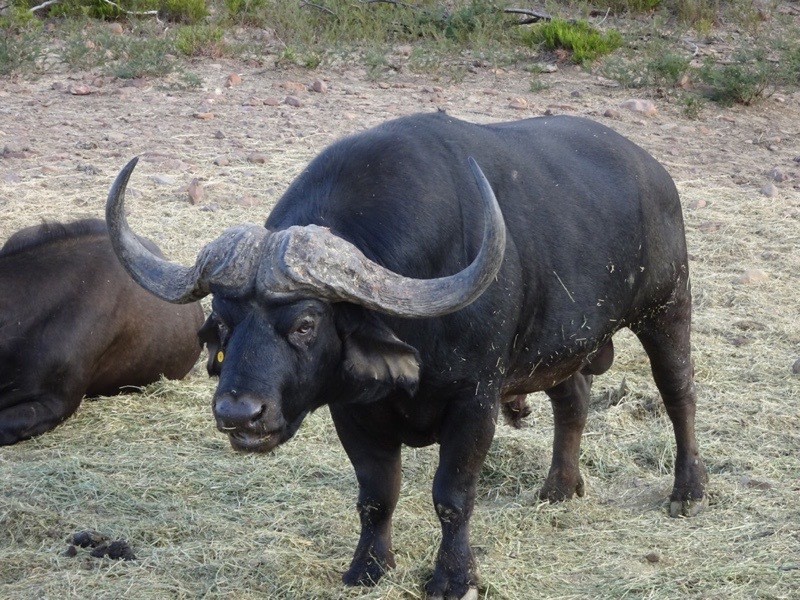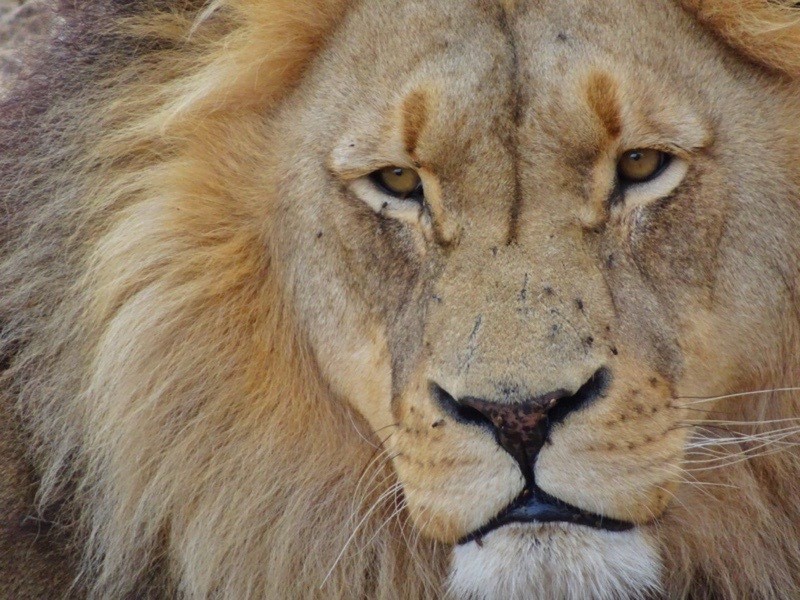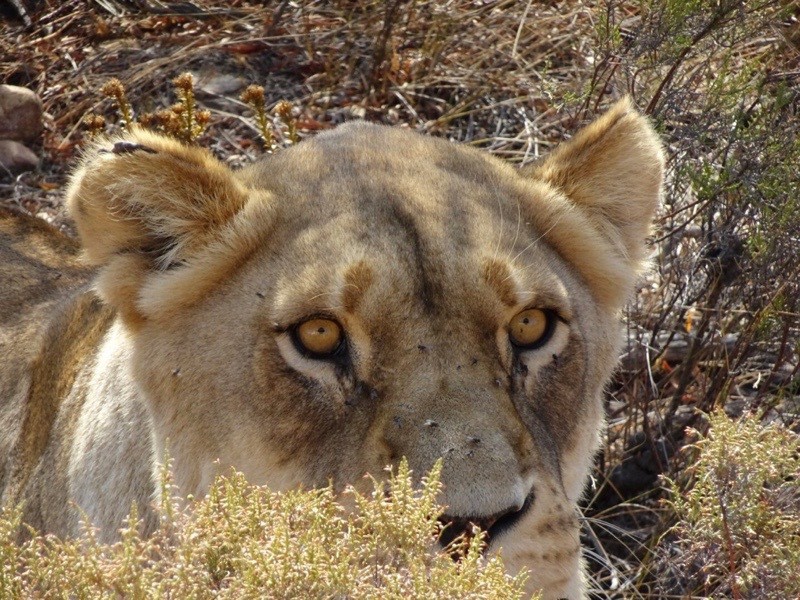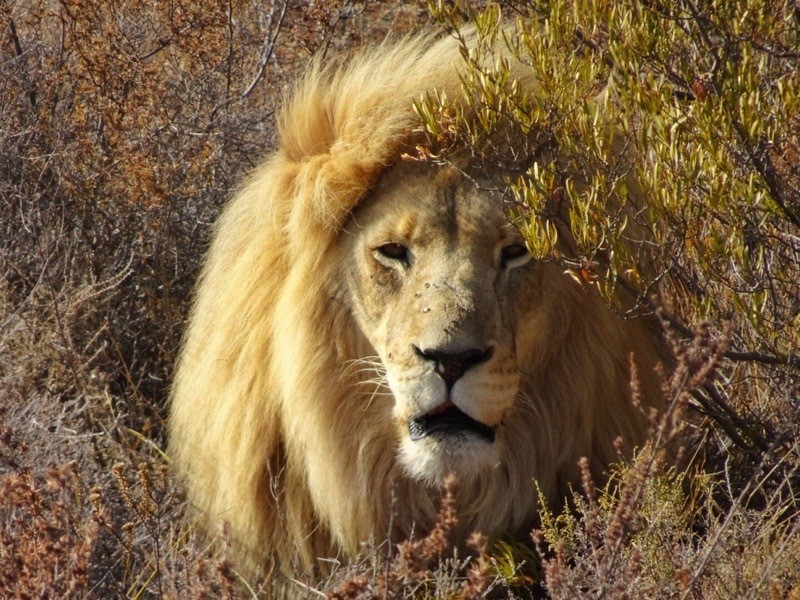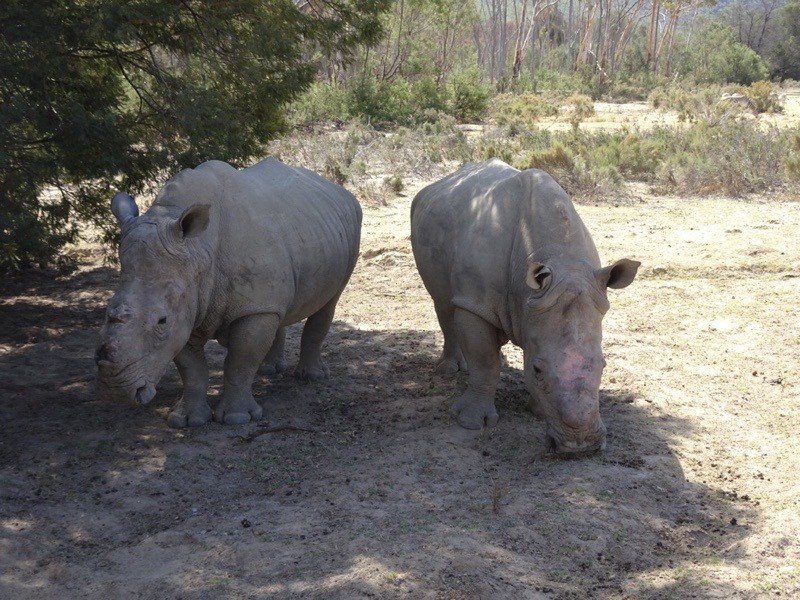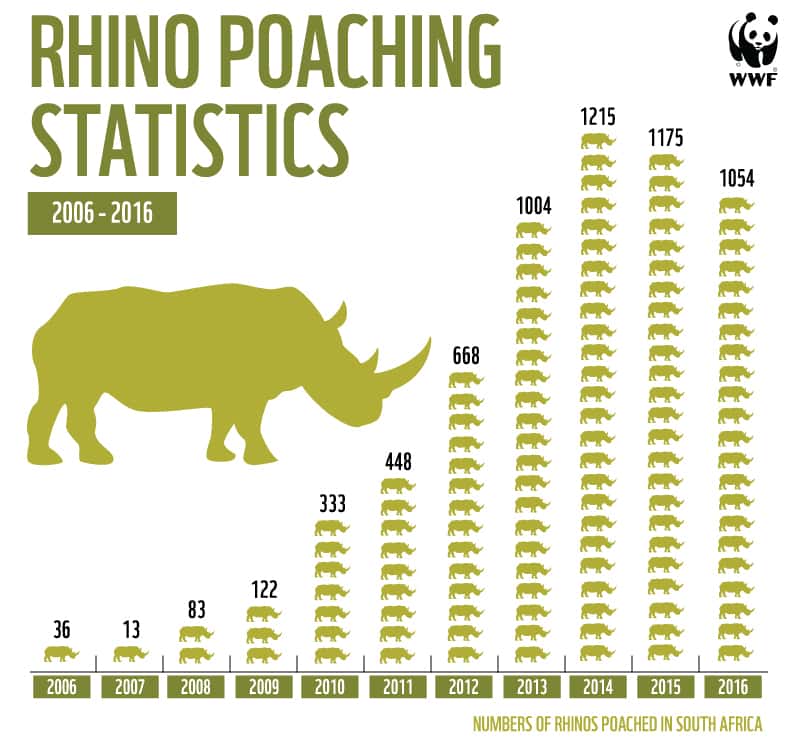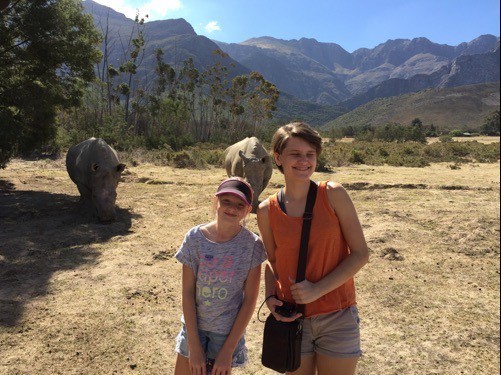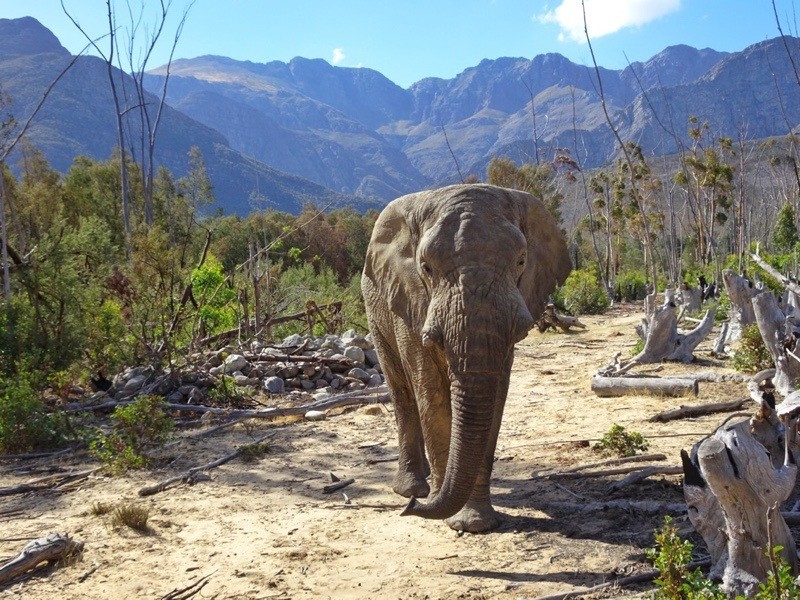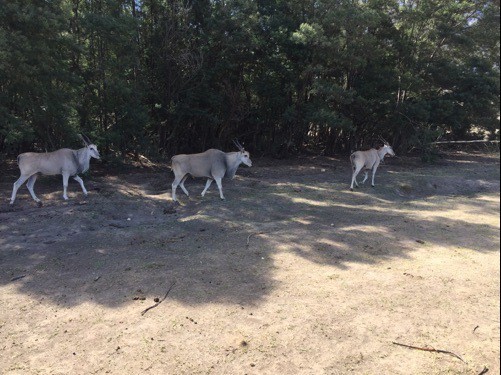Multiple people have asked about our plans to do a safari while here in South Africa. “You can’t go to South Africa and NOT do a safari” they said.
We say: “Yes we can.”
We Are Not On Vacation
The outlook that many people have about a safari is one of a vacation mindset. For a vacation, you save up all year, you take one or two major trips a year, you blow a huge amount of money, do the most important stuff in the country, make amazing memories and go home until the next vacation. Lather, rinse, repeat.
Although we post some amazing pictures, we are not on vacation. Travel is our life. Now that we are staying no more than 3 months in a country, we simply cannot do all of the awesome things that every country has to offer. We have to pick and choose.
But alas, we do love animal encounters. Sloths, crocs, whale sharks, hippos, penguins, cheetahs, ostriches… the list keeps getting longer. And the girls recall these experiences as some of their best times on our journey. So we knew that we wanted some type of safari experience if at all possible. But there are a lot of decisions you have to make when planning your safari.
Safari Decisions
Cost: We could spend our entire year’s budget on a safari. Or we could go to a smaller park and hope we see the animals that we want to see. But all safari tours say there’s no guarantee we will see the animals we want, that it’s up to nature to produce them at the exact time and place we happen to be there. We looked into a mid-priced safari for 3 days and the total cost came to $5,000. Yup. When we look at that cost and see how far it will get us for a month of comfortable lodging and some really interesting day trips, well, it becomes hard to justify.
Time: How much time do we want to spend on this trip within a trip? We already have our lodging all paid for until we leave South Africa so we aren’t too interested in paying for another place to sleep on top of that. So suddenly the day-trip safaris rose to the top of our list.
Location: Everyone told us that Kruger National Park was the best place to go. We believe them. But it’s never that easy. We looked into the details of getting there, which afforded it’s own set of challenges, but the most significant detail was the malaria medicine. To visit most places in Kruger it is recommended you protect yourself against malaria. For the doctor visit to get the prescription and then the prescriptions themselves, it was well over $300 USD. We were not willing to risk going without malaria medicine, as Zoe seems to attract every mosquito within a 5 kilometer radius. Zoe getting malaria would not be a good blog post. So we chose to focus our animal encounter on a malaria-free area.
Animal Management: Lastly, we are increasingly avoiding commercial ventures that involve captured animals. We haven’t been to a zoo in years and the animals we do see in captivity are usually limited to those who would not otherwise survive in the wild. Even while paying close attention to this matter, it’s hard to judge if the endeavor is worthy of support. In the end we decided to make the least bad decision. Sometimes that’s the best you can do.
Fairy Glen
You see why sometimes we are the pirates who don’t do anything? #veggietales Making decisions can be exhausting. But alas Dan did some research and suggested this 3-hour game tour called Fairy Glen, about an hour away from our current awesome Airbnb in Cape Town.
We chose the afternoon game drive because, well, we have a teenager. #saynomore Wonder of all wonders, said teenager was the first one out of the house that day. We must have given her enough days at home in her room on Skype with Texas or perhaps it was threatening to take away the new camera that was not being used to it’s full potential. Either way, it was bueno.
The drive was easy and fast. We probably incurred several more speeding tickets from the many roadside cameras but that’s how we roll fly. We were served an excellent buffet lunch and soon we set off on our drive. Haley mentioned the “bus like” sounds of the vehicle brought back public school memories (she shudders at the thought). But we had only one other person on the vehicle with us, a soft spoken fellow from Norway who did not dominate the tour. That was awesome because dominating the tour is my job.
I’ll let the Haley’s pictures speak for themselves but don’t think you are done reading. I’ve got more ‘splainin to do.
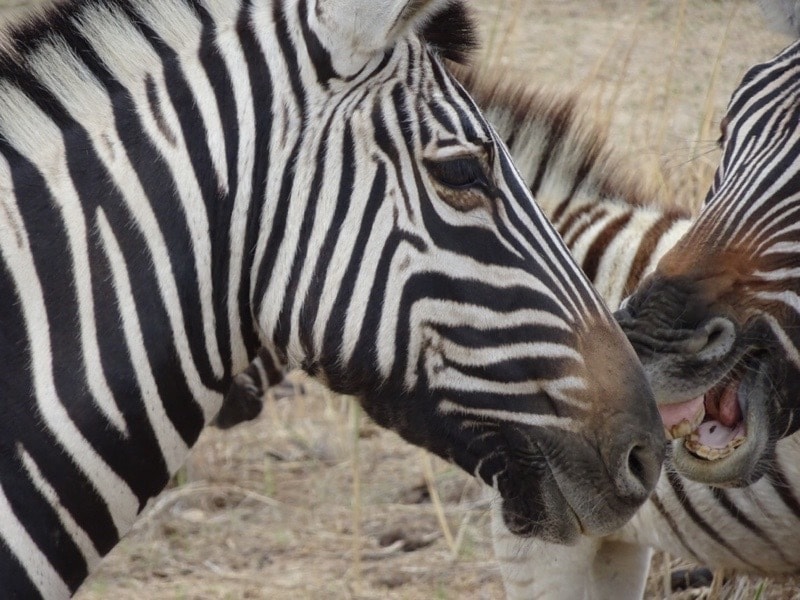
Lady and Higgins
This is our first time seeing rhinos and we loved them. Higgins was the male and he rammed the vehicle a few times. But since he has no horn, the ramming was only in spirit. His having no horn is an amazing story that totally opened all of our eyes. Higgins and Lady were poached in 2011 while at this park. Our guide told us that several guests came and registered under false names. They started a fire in another part of the reserve as a distraction, and while the staff were preoccupied with the fire they tranquilized the rhinos and drilled into their skulls and removed their horns. The staff discovered the suffering rhinos the next morning. Evidently tranquilizing rhinos is the best way for a poacher to get to them, as a gunshot may not harm them enough and could cause them to charge or get away.
Upon discovering the horrible scene of injured rhinos, the first thing the vets had to deal with was an antidote to the lethal sedative. They had no idea how to deal with it but they guessed that a human antidote was their only chance. Getting it in the quantity they needed for a rhino was only available at the local hospital. Thankfully they secured enough and shortly after administering it, the rhinos began to respond.
Next they had to try and address the rhinos’ injuries, whose airways were blocked from the blood. They were also in shock. To make matters worse, this occurred in December, a warm month in the Cape of South Africa. So the vets and staff had to prevent dehydration from the hot sun. A miracle December rain came and helped the workers. That rain is partially credited with saving the lives of these poor creatures. Higgins lost much of his eyesight immediately following the attack and after he was reunited with Lady (he was lost from her for several days), he relied on Lady to lead him around. Fortunately his eyes have mostly healed now.
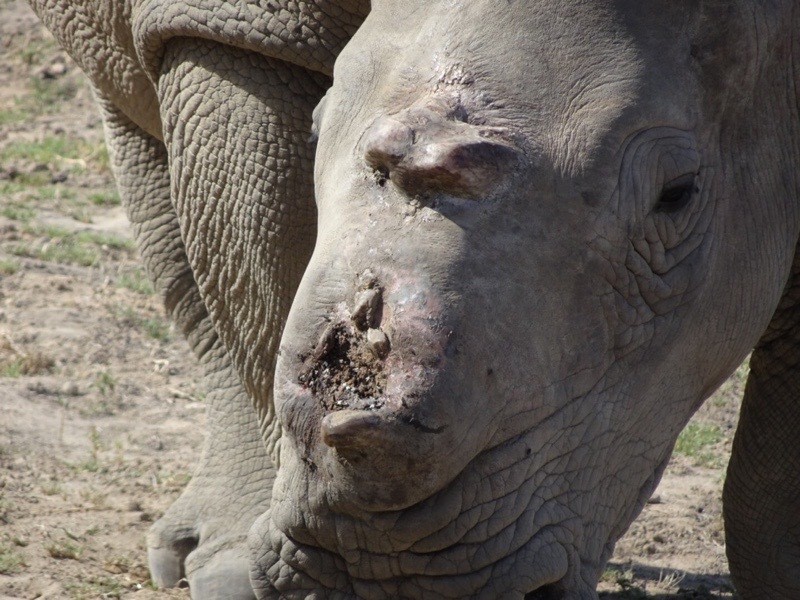
I could not imagine what would prompt someone to do something so horrible to these amazing creatures. Evidently it comes down to money. A kilogram of rhino horn goes for $90,000. That’s USD and that’s not a typo. And a single rhino can produce up to 15 kg of horns. So there’s a huge amount of money to be had if one can navigate around the strict anti-poaching and exporting and importing laws.
Demand for horns, which are made of the same material as fingernails, comes mainly from Vietnam and China, where they’re worked into valuable carvings and are erroneously used as a cure-all in traditional medicine. Rhino poaching has skyrocketed during the past decade. Last year 1,054 rhinos were poached in South Africa, down a bit from the previous year but still a massive jump from the mere 13 killed in 2007.
The next several years were spent slowly nursing Lady and Higgins back to health. After 6 years you can still see the wounds and Lady’s wounds still need treatment, although her keen sense of smell alerts her when the antibiotic spray comes around and she runs away. So she has not been able to be treated in quite awhile. The staff are hoping for no infection that would compromise her health. She is young in rhino years and could still reproduce and live a long and healthy life if she does not succumb early due to her injuries. Our guide told us that Lady was pregnant at the time of the attack and subsequently lost her baby. She has not become pregnant since then but Higgins is still hoping.
Just one day after our meeting Higgins and Lady, the ban on selling rhino horns in South Africa was lifted. Initially we were saddened and disgusted and worried for the fate of rhinos. But it’s never that simple. Digging in a little deeper, we learned that some people feel there can actually be some positive reasons to do this. I have not come to one conclusion or the other on this topic. This article explains it in more detail, but it is a sad day if indeed the lift of the ban causes more harm for the rhino population.
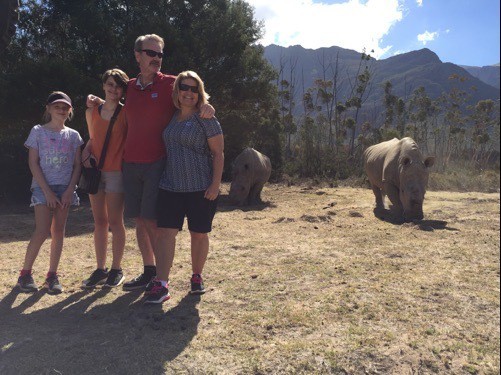
Drunk Elephants And More
We enjoyed meeting the two elephants that live on this reserve. They were huge, but not even at full size. Our guide told us that these brothers were naughty teenage boys, as they have been caught escaping the reserve into the neighboring vineyard and eating the grapes. The guide said that the saying is true, elephants have amazing memories. They will remember the scrumptious grapes and will return over and over again if allowed. The reserve now hires a worker who sits on a tree branch off to the side to watch the elephants all day and make sure they don’t venture over to the grapes. The elephants are brought in at night and given additional supplements. They enjoyed the carrots that we fed them and we were able to touch their amazing trunks, which were both warm and very course.
We continued our drive around and saw the other animals including elands, zebras, ostriches, lions, springbok, gnus and buffalo. Our tour operator was extremely knowledgeable and spoke a wonderfully clear English that made the entire experience very enjoyable.
We had an “aha” moment when watching the elands walk. Our guide said that the animal’s front hooves scrape together when it walks. This produces a clicking noise. Many native African tribes would follow this animal to the watering hole and in time this clicking noise became part of their language. We have heard many people speaking tribal languages while here and they almost all have the tell-tale click. (Addendum to this…I can’t find anything in Google to support this clicking-to-language connection… so take it as just a colorful story our guide told us until evidence springs up to say otherwise.)
#SafariNotSafari
Alas, the experience does not come without mixed feelings. These animals existed in their natural habitat, eating the native grasses and plants, they had ample room to roam, they had watering holes and other animals who would normally be found in their same area. But they were not free. You could not see fences, but they were there. In addition, due to a severe drought in this part of the country, there is not enough food for these animals and their diet is supplemented with a protein rich alfalfa called “lucerne”. This is good. Or is it?
On one hand we were not willing to pay what it would cost (time and money) to see animals in the true wild. Safaris last a week or more because sometimes that’s how long it takes to see an animal in their truly natural habitat. Our guide said that even Kruger practices some animal management, although I believe it is less than this private reserve. But at the same time we did not want to support a commercial venture that would encourage other business to import and hold animals captive. I went so far as to wonder, if Lady and Higgins were not on this reserve, would they have been poached? Dan responded that perhaps the reserve protected them from being poached earlier, and most certainly the staff saved their lives.
There’s no easy answer. I can’t deny that I loved the experience. Dan and I thought the animals were fascinating, the girls were totally engaged and learning a lot and we all made a lot of memories. So I’m not sorry we did it. I only wish there could be a different reality for these animals and the humans who want to see them.

